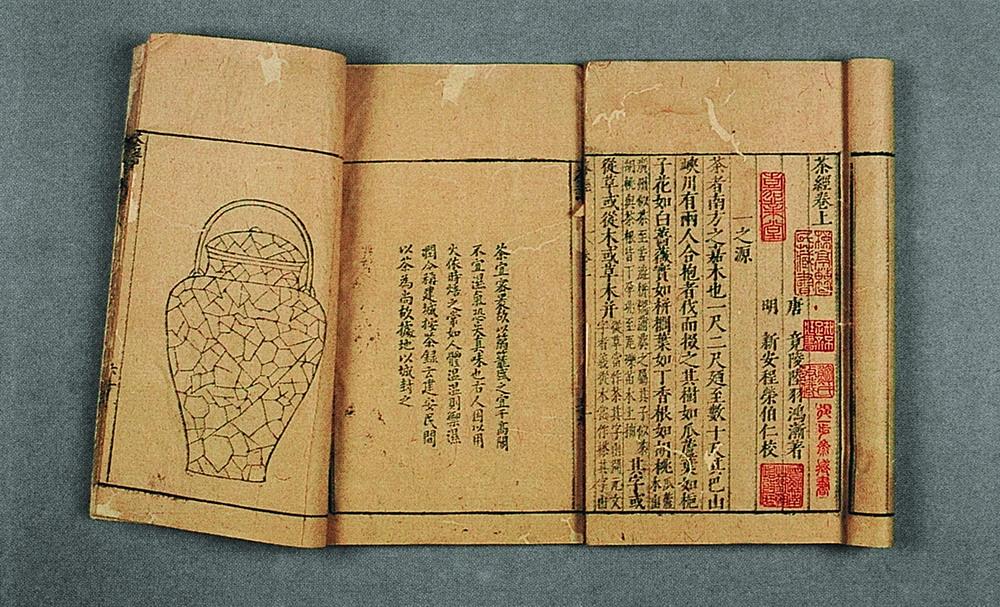In the early days, tea used to be consumed as a medicinal beverage. Tribes in the North Western regions of China boiled the tea until all the all flavour and nutritions were extracted. The resulting tea was bitter, and definitely not for pleasure. Instead, tea was seen as a practical drink that prevents one from different ailments and keeps one warm.
But tea became more than just that during the Tang Dynasty. Cultivation, production and trade flourished. As a result, tea-drinking surged in popularity. You couldn’t go anywhere in the capital of Chang’an without seeing tea: at the imperial court, in the monasteries, on the street… Everyone drinks tea: monks, poets and even the common people.
Why Tea Became Popular During The Tang?
There are several factors that allowed tea to go mass market. First of all the Tang dynasty was a relatively peaceful period. Emperors such as Taizong and Gaozong not only practiced the ‘Art of War’ but had plenty of time to practice the ‘Art of Tea’.
But it wasn’t only the emperors who loved tea. With the backing of the Monks and famous poets such as Lu Yu, it was just a matter of time for common people to start appreciating tea.
Tea and Chan Buddhism (Zen Buddhism)
Chan Buddhism flourished in Tang Dynasty. It requires days of meditation practice. The monks found tea very refreshing and useful. It helped them stay awake and get rid of distracting thoughts. Tea became their favourite drink. Most of the Chan Buddhist temples located in the mountains. These mountains had the right soil and temperature for growing tea. The monks started to grow and produce their own tea. They planted more and more tea trees around temples. They were among the earliest big scale tea growers in China. The monks set the tea-drinking trend. They also discovered new growing and roasting method that improved the taste of tea.
Lu Yu and The Classic of Tea
During the heyday of Tang Dynasty, Lu Yu grew up in a temple with a tea-loving adopter. Eventually he travelled through all tea regions and met many tea masters of his time. All the knowledge and experience he gained, eventually let to his life’s work known as the: The Classic of Tea (Cha Jing).

The book showed the whole tea-drinking procedure and methods. It also listed 28 tea utensils and 8 growing regions of tea at its time. It marked the birth of Chinese tea ceremony and set a model for the development of tea culture in later ages. With his contribution, Lu Yu deserved the name “Tea Saint”.
Also read the Full History of Tea in this article: History of Tea in China & How It Spread Across the World.
Tea Trade During The Tang Dynasty
Early in Tang Dynasty, Princess Wencheng got married to Tibetan King Songtsän Gampo and introduced tea to Tibet.

The Tibetan people had a diet based on meat and dairy, tea was the best drink for the vitamins they lacked. Soon tea was high in demand. But high altitude and tough climate there made it hard for tea to grow. However, there were plenty of good Tibetan horses that inland market needed for the expanding army.

With the surging tea production and the market for horses, inland tea merchants started to transport tea through some tough routes to Tibet, and exchanged it for Tibetan ponies back. This was called “tea-for-horse” trade, a big part of the Tea Horse Road history.
The Word ‘Tea’ During The Tang
Before Tang tea was called “tu” (荼). It means tea as well as bitter vegetable and one kind of weeds. As tea gained more and more popularity, people found the need to give tea a specific name. They took out one stroke of the character “tu”, and called it “cha”(茶). This character meant “tea” only. Lu Yu used “cha” in his The Classic of Tea (Cha Jing). Famous tea enthusiast and poet Lu Tong also used “cha” in many of his poems. Since then, “cha” was tea, and it lasted until today.
Teaware During Tang Dynasty
Teaware became a big part of tea culture during Tang. The ceramics industry’s rapid development resulting in teaware to become more affordable. Common families were now able to drink tea from ceramic tea cups and store tea in ceramic jars.
At that time, the two most famous styles of teaware were Xing ware from Hebei and Yue ware from Yuezhou. The first, was known for its clean white appearance, while latter was appreciated for its polished jade look.
Discover more from Hello Tea Cup
Subscribe to get the latest posts sent to your email.

No Comments